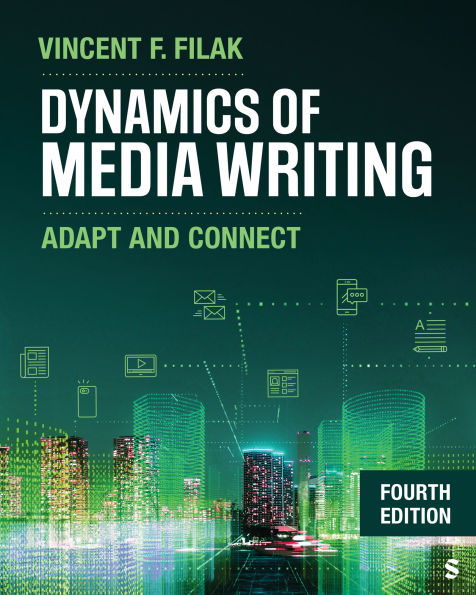Dynamics of Media Writing: Adapt and Connect
Dynamics of Media Writing gives students transferable skills that can be applied across all media platforms—from traditional mass media formats like news, public relations, and advertising to emerging digital media platforms. Whether issuing a press release or tweeting about a new app, today’s media writers need to adapt their message for each specific media format in order to successfully connect with their audience. Throughout this text, author Vincent F. Filak introduces fundamental writing skills that apply to all media, while also highlighting which writing tools and techniques are most effective for specific media formats and why. User-friendly and loaded with practical examples and tips from professionals across mass media, this is the perfect guide for any student wanting to launch a professional media writing career. The newly revised Fourth Edition features a new chapter centered around artificial intelligence (AI), in addition to highlighting recent developments in writing for websites and blogs, new interviews with working journalists on recent changes in the industry, and updated examples to show success digital media writing strategies.
1127287581
Dynamics of Media Writing: Adapt and Connect
Dynamics of Media Writing gives students transferable skills that can be applied across all media platforms—from traditional mass media formats like news, public relations, and advertising to emerging digital media platforms. Whether issuing a press release or tweeting about a new app, today’s media writers need to adapt their message for each specific media format in order to successfully connect with their audience. Throughout this text, author Vincent F. Filak introduces fundamental writing skills that apply to all media, while also highlighting which writing tools and techniques are most effective for specific media formats and why. User-friendly and loaded with practical examples and tips from professionals across mass media, this is the perfect guide for any student wanting to launch a professional media writing career. The newly revised Fourth Edition features a new chapter centered around artificial intelligence (AI), in addition to highlighting recent developments in writing for websites and blogs, new interviews with working journalists on recent changes in the industry, and updated examples to show success digital media writing strategies.
156.0
Pre Order
5
1

Dynamics of Media Writing: Adapt and Connect
320
Dynamics of Media Writing: Adapt and Connect
320Paperback(Fourth Edition)
$156.00
156.0
Pre Order

Product Details
| ISBN-13: | 9781071936689 |
|---|---|
| Publisher: | SAGE Publications |
| Publication date: | 08/07/2025 |
| Edition description: | Fourth Edition |
| Pages: | 320 |
| Product dimensions: | 8.00(w) x 10.00(h) x 0.00(d) |
About the Author
From the B&N Reads Blog
